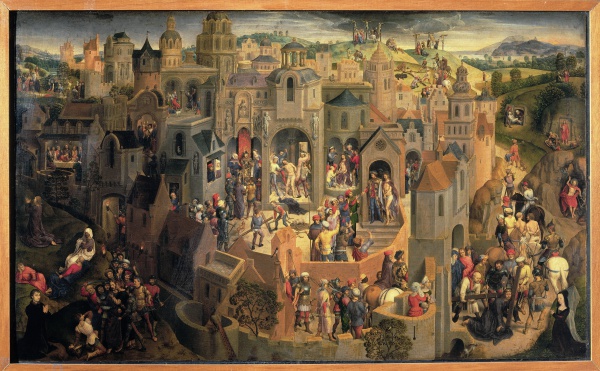Facts About Scenes from the Passion of Christ
"Scenes from the Passion of Christ" is an oil painting on Baltic oak panel, created around 1470 by Hans Memling, a German-born painter of the Early Netherlandish period. This detailed artwork was commissioned by Italian banker Tommaso Portinari and features 23 scenes from the Life of Christ, including 19 episodes from the Passion, the Resurrection, and subsequent appearances of the risen Christ. Notably, Portinari and his wife are depicted in a donor portrait within the painting.
The artwork measures 56.7 × 92.2 cm and was likely intended for Portinari's chapel in the Church of St. Jacob in Bruges. However, it was not among Portinari's possessions at his death in 1501. It is believed the painting was transferred from Bruges to Florence between 1510 and 1520. By 1550, it was part of Cosimo I's collection in Florence. Today, this masterpiece is housed at the Galleria Sabauda in Turin.
The series of scenes in the painting follow a chronological sequence, beginning with Jesus's entry into Jerusalem on Palm Sunday. They proceed through the events of the Passion in the city and conclude with the appearances at Emmaus and Galilee. One of the painting's remarkable features is its depiction of an idealized medieval Jerusalem, replete with distinctive towers and domes. Additionally, Memling's use of lighting to simulate the rising sun adds a unique touch to the scenes. The artwork includes seven of the traditional Stations of the Cross, as well as additional scenes before and after them, but it omits some traditional moments like Jesus meeting his mother and Veronica wiping his face.
Memling later employed a similar narrative style in his work "Advent and Triumph of Christ" (also known as "Seven Joys of the Virgin"), which he created in 1480 for the altar of the Tanners' Guild in Our Lady's Church in Bruges. This piece is now held at the Alte Pinakothek in Munich.

 France
France